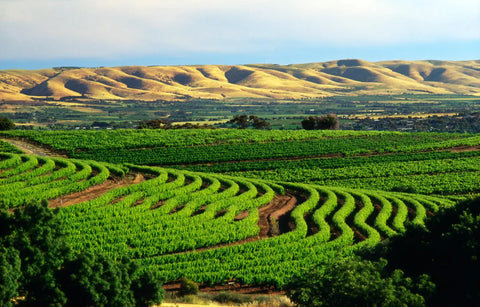The delightful marriage of cheese and wine is a culinary cornerstone, offering a symphony of flavours and textures that can elevate any occasion. When it comes to soft cheeses and white wines, the pairing possibilities are particularly nuanced, demanding a thoughtful approach to flavour matching and an appreciation for seasonal variations.
This article, produced by McLaren Vale Vineyards, provides a complete guide to pairing soft cheeses with white wines, considering key aspects such as flavour affinities, popular cheese varieties, seasonal recommendations, and guidance on crafting an exquisite tasting board.
Flavour Matching: Finding the Perfect Complement
The key to a successful cheese and wine pairing lies in understanding how their respective flavour profiles interact. The goal is to find a harmony where neither element overpowers the other, but rather enhances the overall sensory experience.
-
Acidity and Richness: Many soft cheeses possess a rich, creamy texture and a subtle lactic tang. White wines with good acidity can cut through this richness, cleansing the palate and preventing the cheese from feeling heavy.
-
Intensity Matching: The intensity of the cheese should generally match the intensity of the wine. Delicately flavoured soft cheeses pair well with lighter-bodied white wines, while more pungent varieties can stand up to wines with greater character.
-
Aromatic Similarities: Look for aromatic connections between the cheese and the wine. For example, a floral white wine might complement a cheese with subtle herbal notes.
-
Opposites Attract: Sometimes, contrasting flavours can create an intriguing pairing. A slightly sweet white wine can provide a delightful counterpoint to the saltiness or earthiness of certain soft cheeses.
Most Popular Soft Cheeses: A Curated Selection
The world of soft cheese is diverse and delicious. Here are some popular varieties and their general pairing affinities with white wines:
-
Brie: With its buttery texture and mild, slightly fruity flavour, Brie pairs beautifully with crisp, dry white wines like Sauvignon Blanc or Pinot Grigio. The acidity of these wines balances the creaminess of the Brie.
-
Camembert: Similar to Brie, but often with a more pronounced earthy and mushroomy flavour, Camembert can also be excellent with dry whites. Fuller-bodied options like Chardonnay (especially unoaked or lightly oaked) can complement its richness.
-
Goat Cheese (Chèvre): Ranging from fresh and tangy to aged and more complex, goat cheese finds a wonderful partner in high-acid white wines like Sancerre or dry Riesling. The citrusy and herbaceous notes of these wines highlight the goat cheese's characteristic tang.
-
Burrata: This Italian cheese, with its creamy, stracciatella-filled centre, is luscious and mild. It pairs well with refreshing, light-bodied whites like Vermentino or a crisp Italian Pinot Bianco.
-
Feta (Traditional, Creamy): While often thought of with salads, a particularly creamy and less salty Feta can be surprisingly good with aromatic white wines like Gewürztraminer or Viognier, where the floral and slightly spicy notes provide an interesting contrast.
Seasonal Suggestions: Pairing with the Time of Year
The seasons can inspire delightful soft cheese and white wine pairings.
-
Spring: As fresh flavours emerge, pair young, bright goat cheeses with crisp Sauvignon Blanc or Vermentino, echoing the season's vibrancy.
-
Summer: Lighter-bodied whites like Pinot Grigio or a dry rosé are refreshing partners for creamy Brie or delicate Burrata on a warm day.
-
Autumn: The richer flavours of lightly oaked Chardonnay or a dry Chenin Blanc can complement the earthier notes of Camembert as the weather cools.
-
Winter: Fuller-bodied whites with a touch of richness, such as a Viognier or a more mature dry Riesling, can stand up to the richer textures and more intense flavours that might be present in aged goat cheeses or a particularly decadent Brie.
Creating a Tasting Board: A Sensory Experience
A well-crafted tasting board elevates the enjoyment of soft cheese and white wine pairings.
-
Variety of Cheeses: Include a selection of different soft cheeses to offer a range of flavours and textures.
-
Complementary Accompaniments: Provide neutral crackers or baguette slices to cleanse the palate. Fresh and dried fruits, nuts, and a drizzle of honey or fig jam can offer contrasting and complementary flavours.
-
Wine Selection: Choose a few different white wines that represent a range of styles and flavour profiles to explore various pairings.
-
Presentation: Arrange the cheeses and accompaniments attractively on a board, allowing space for easy sampling.
-
Tasting Notes: Provide brief descriptions of each cheese and wine to guide your guests.
-
Start Mild, End Strong: Encourage tasting the milder cheeses with the lighter wines first, progressing to more intense pairings.
Key Features:
-
Understanding flavour affinities between soft cheeses and white wines.
-
Exploration of popular soft cheese varieties and their ideal white wine partners.
-
Seasonal suggestions for inspired pairings throughout the year.
-
Guidance on creating a balanced and appealing cheese and wine tasting board.
-
Emphasis on matching intensity and considering aromatic similarities.
-
Highlighting the role of acidity in cutting through the richness of soft cheeses.
FAQ's:
Q: What is the best temperature to serve soft cheese for a tasting?
A: Soft cheeses are best served at room temperature to allow their full flavour and texture to develop.
Q: Should I always pair sweet white wines with cheese?
A: Not necessarily. Dry white wines with good acidity often work beautifully with soft cheeses, providing balance. Sweet wines can be excellent with saltier or more pungent cheeses as a contrast.
Q: How much cheese and wine should I allow per person for a tasting?
A: For a tasting, aim for approximately 1-2 ounces of each cheese per person and a few ounces of each wine.
Q: What are some good non-alcoholic pairings for soft cheese?
A: Sparkling grape juice, apple cider, or even a well-brewed iced tea can offer refreshing and complementary flavours.
Q: Can I pair soft cheeses with sparkling white wines?
A: Absolutely! The bubbles and acidity of sparkling wines like Prosecco or Champagne can be a delightful match for creamy soft cheeses.




Comments (0)
There are no comments for this article. Be the first one to leave a message!